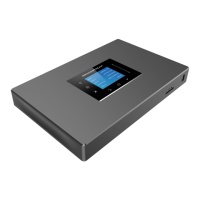Each layer also has its own structure at different levels. Please see the figure below. The details for each layer
are explained in sections [Global Configuration], [Model configuration] and [Device Configuration].
Figure 61: Zero Config Configuration Architecture for End Point Device
The configuration options in the model layer and device layer have all the option in global layers already, i.e., the
options in the global layer is a subset of the options in the model layer and the device layer. If an option is set in
all three layers with different values, the highest layer value will override the value in the lower layer. For example,
if the user selects English for Language setting in Global Policy and Spanish for Language setting in Default
Model Template, the language setting on the device to be provisioned will use Spanish as the model layer has
higher priority than the global layer. To sum up, configurations in the higher layer will always override the
configurations for the same options/fields in the lower layer when presented at the same time.
After understanding the zero-config configuration architecture, users could configure the available options for
end point devices to be provisioned by the UCM630X by going through the three layers. This configuration
architecture allows users to set up and manage the Grandstream end point devices in the same LAN area in a
centralized way.
Auto-Provisioning Settings
By default, the Zero Config feature is enabled on the UCM630X for auto-provisioning. Three methods of auto-
provisioning are used.

